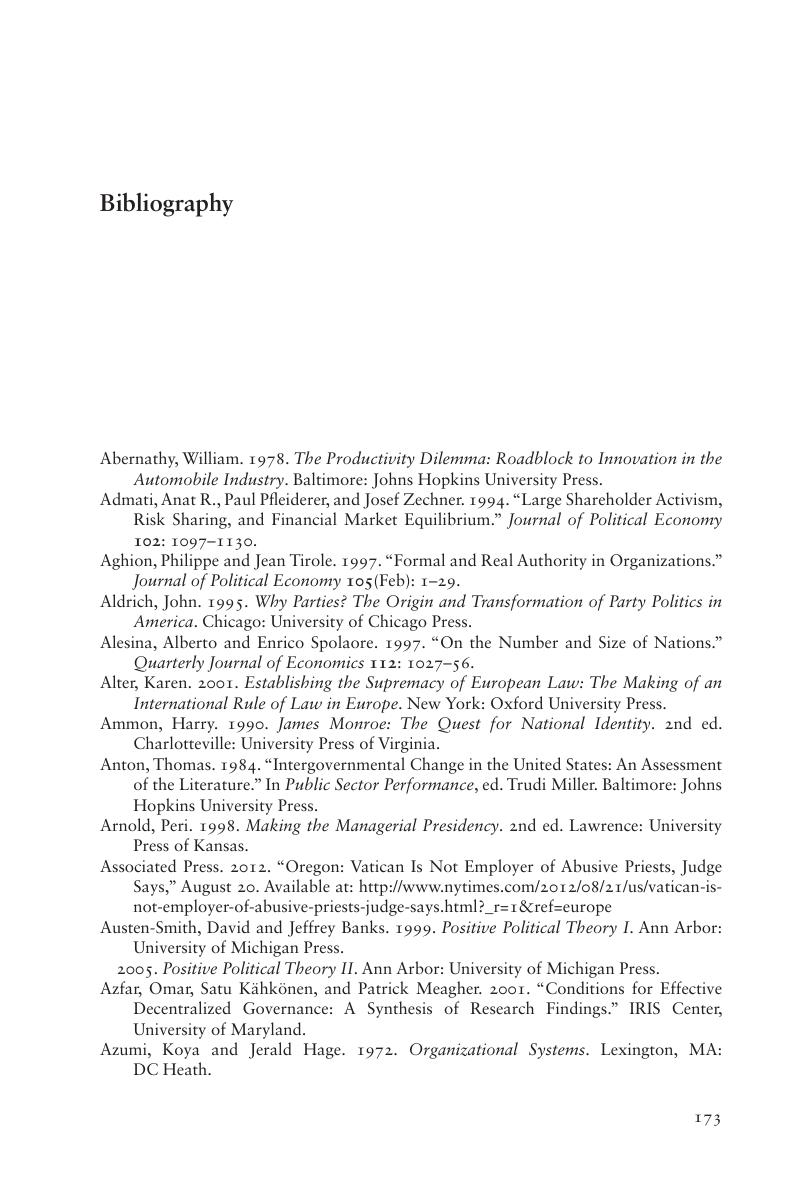Bibliography
Published online by Cambridge University Press: 05 June 2014
Summary

- Type
- Chapter
- Information
- Perils of CentralizationLessons from Church, State, and Corporation, pp. 173 - 194Publisher: Cambridge University PressPrint publication year: 2013

